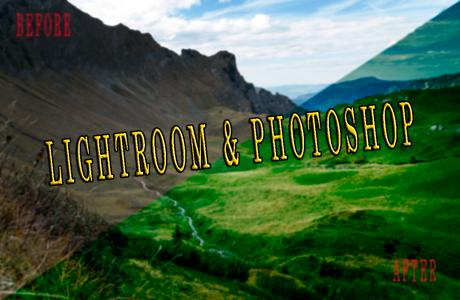
Have you ever been in a situation when you made photos with a DSLR in RAW-fomat and your pics never looked like professional ones you know from a poster, post card or the internet? And did you ask yourself, if the problem would be caused by your equipment? Or maybe it were your poor techniques which let you feel like an amateur without any skills? Let me tell you folks – it’s not about you or your equipment. It’s actually about the way the modern DSLR cameras are designed! And that’s a good news, isn’t it? With this article I hope to give you some clarity so you can boost up your photography.
At the beginning there are always the basics
Of course, to make good pictures, you need to deal with the photography basics first. You need to know something about the photographic view, about the rule of thirds and so forth. Also, you need to know your camera. An expensive one will not make automatically better pictures. If you don’t know how to use your device, you will not be able to achieve good results at all.
But let’s assume that you have read some books about photography*, bought a good DSLR, e.g. a Canon EOS 6D Full Frame* (but it doesn’t need to be a full frame one), and practiced for a while. Your compositions became better, and you developed a photographic view. Also, you can deal now with the different rules of composition, and you know your camera really good. But every time you make photos, you still see, that they don’t look like the ones from photographers you are inspired by. They still look dull, flat and a kind of lifeless, right? So where is the problem? Here comes the answer for the reason for this situation.
The concept of modern cameras is responsible for tedious pictures
The modern cameras are designed to capture as much information as possible. But they are NOT designed to produce finished photos within the camera. The advantage of this fact is that you can capture with a DSLR up to 4 times more tonal range than with a film camera back at those days. But the capability of capturing wider tonal range has its price. The price for this lies in the reduction of contrast which lets you photos look boring and lifeless. At fist blush it doesn’t make any sense, right?
Well, that all makes sense. The more information a RAW file contains, the more editing it will allow you to do, without losing the quality of the photo.
And it’s your job to bring these tedious RAW files to life after you made the photos. And the best thing to do this is to use Lightroom and Photoshop* (or other software for photographers)! To show you some examples, let’s take a look on some pictures below:
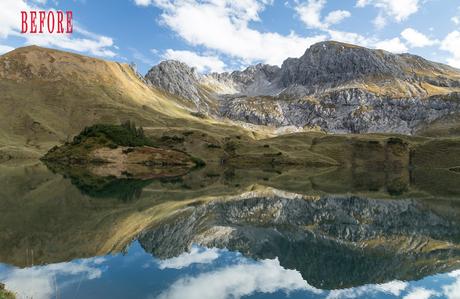
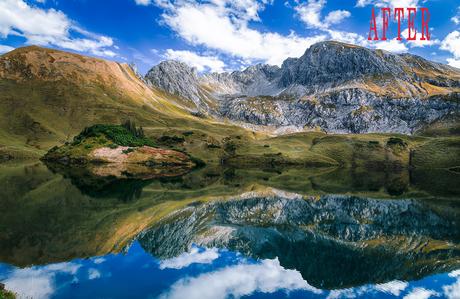
This one above I made during my hike to the Lake Schrecksee I wrote about in this article.
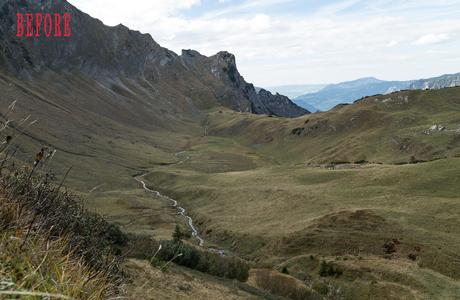
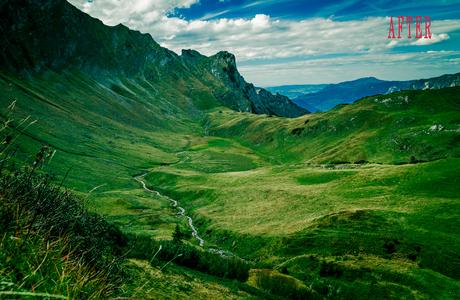
It’s another on from Lake Schrecksee. You can see that on the original photo the grass wasn’t such green. It wasn’t indeed. I just added some more green during my Lightroom workflow. Someone might say, the photo is too much manipulated because the real scene wasn’s such green. But I don’t concern much every time about reality. Especially then, when the output looks better than the input. The summer of 2018 was devastating and unfortunatelly, the whole Europe looked yellow instead of green in this year. But during the spring, this area was green like an Irish meadow. And that’s it, what I wanted to impart.
Let’s take a look on the last one. I made this during my travel to Naples.
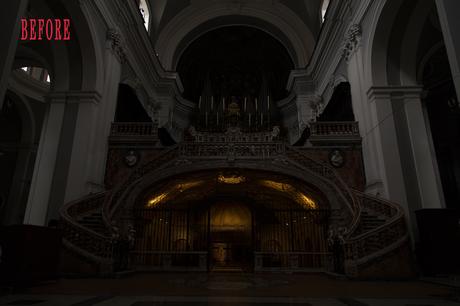

What you need is a Lightroom and a Photoshop workflow
Lightroom (or different software for photographers) should be a main tool for any photographer who wants to give a boost to his or her photos. But what you need to do, is to create a workflow within Lightroom and Photoshop*.
This blogpost is not about how to create a workflow but about the general message of post-processing. But just to sum it up: a Lightroom and Photoshop workflow deals with topics like cropping, adjusting of light, color, hue, saturation, sharpening and so forth. And a workflow allows you to give a recognition factor to your pictures.
If you are new to photography, you maybe don’t know how to do this. But luckily, there are plenty tutorials out there. There are a lot of free courses on Youtube and premium courses as well. So it’s up to you to decide which one you prefer. For example, I started with free courses first but later I also bought some premium tutorials because if you do this, you will get a better support from the publisher if you have any questions.
How much of Lightroom and how much Photoshop is needed?
It’s up to you to decide, and there is no rule which stipulates to do more Lightroom or more Photoshop. On the one hand, Lightroom* was designed for photographers, while Photoshop* is used by photographers and other people, like designers, too. Actually, as a photographer, the most post-processing steps you will be able to achieve in Lightroom and that’s also what I do.
I spend about 80% of my post-processing time in Lightroom, and I use Photoshop just for final sharpenings, removing annoying spots with better tools in Photoshop, adjusting the colours, choosing luminosity masks, and so on. But when I do this, the most work is already done in Lightroom.
On the other hand, Photoshop has a plug-in where you can post-process RAW formats, and thus you can do all the work in Photoshop.
Which solution should you choose?
Well, you alone can answer this by trying out both possibilities. I chose the way of Lightroom because I couldn’t get used to the idea to work in Photoshop only with the RAW plug-in. But this all happened in my head, and when you start to deal with post-processing, you will find your own way. Hence, if you like the way of the process only in Photoshop, it’s fine too. Just try it and figure it out, folks.
So my final words to you are: do some post-processings to improve your photos by using Lightroom, Photoshop or any other suitable software. But keep in mind not to exaggerate and edit wisely. It’s all up to you and your creativity, folks.
*Affiliate link: when you click on this link, no additional costs would arise for you and the product or the service will not become more expensive. When you decide to buy the product or use the service, I’ll get a little benefit from the provider which I would reinvest to keep this blog alive.
